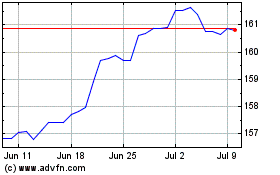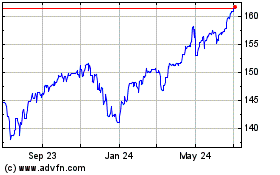U.S. Dollar Advances Ahead Of Powell's Testimony
March 01 2018 - 4:51AM
RTTF2
The U.S. dollar firmed against its major counterparts in the
European session on Thursday, as investors await second
Congressional testimony from Federal Reserve Chair Powell amid
speculation that the central bank may quicken the pace of monetary
tightening this year.
Powell will testify before the Senate Banking Committee at 10:00
am ET.
His appearance comes after the House testimony on Tuesday, when
he spurred hopes for a faster pace of rate hikes in the wake of
strong economic outlook.
Data from the Labor Department showed that first-time claims for
U.S. unemployment benefits unexpectedly fell last week.
The report said initial jobless claims fell to 210,000 in the
week ended February 24th.
Economists had expected jobless claims to inch up to
226,000.
Data from the Commerce Department showed that U.S. personal
income increased slightly more than expected in January, while
personal spending rose in line with estimates.
The report said that personal income climbed by 0.4 percent in
January, while personal spending edged up by 0.2 percent.
The currency held steady against its major rivals in the Asian
session, with the exception of the yen.
The greenback rose to 1.2163 against the euro, its strongest
since January 18. The greenback is likely to find resistance around
the 1.91 level.
Final data from IHS Markit showed that the Eurozone
manufacturing sector continued to expand at a robust pace in
February but the pace of growth slowed from January.
The factory Purchasing Managers' Index fell to a 4-month low of
58.6 from 59.6 in January.
The greenback reversed from an early 3-day low of 106.55 against
the yen, rising to 107.00. The greenback is seen finding resistance
around the 110.00 mark.
Survey data from the Cabinet Office showed that Japan's consumer
confidence weakened unexpectedly in February, though slightly.
The seasonally adjusted consumer confidence index dropped to
44.3 in February from 44.7 in January.
The greenback firmed to 0.9483 against the Swiss franc, its
highest since January 24. On the upside, 0.96 is seen as the next
resistance level for the greenback.
The greenback strengthened to a 2-1/2-month high of 1.2865
against the loonie, after having fallen to 1.2827 at 2:45 am ET.
The greenback is poised to challenge resistance around the 1.30
level.
On the flip side, the greenback surrendered some of its gains
against the pound with the pair trading at 1.3776. This may be
compared to a 1-1/2-month peak of 1.3727 hit at 5:00 am ET. The
next possible support for the greenback is seen around the 1.43
mark.
Survey data from IHS Markit and the Chartered Institute of
Procurement & Supply showed that the British manufacturing
sector expanded at the weakest pace in eight months in
February.
The Purchasing Managers' Index, or PMI, dropped slightly to 55.2
in February from 55.3 in January.
The greenback eased to 0.7231 against the kiwi and 0.7766
against the aussie, from its early 3-week high 0.7186 and more than
2-month high of 0.7713, respectively. If the greenback falls
further, 0.74 and 0.79 are likely seen as its next support levels
against the kiwi and the aussie, respectively.
The U.S. ISM manufacturing index for February and construction
spending for January are set for release shortly.
US Dollar vs Yen (FX:USDJPY)
Forex Chart
From Mar 2024 to Apr 2024

US Dollar vs Yen (FX:USDJPY)
Forex Chart
From Apr 2023 to Apr 2024
